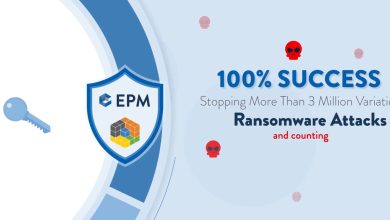Palo Alto Networks Unit 42’s New Managed Detection and Response Service Assists Customers in Better Addressing Cybersecurity Threats

The need for managed detection and response (MDR) is soaring as attack surfaces grow, cloud usage skyrockets and the cybersecurity skills gap widens. Palo Alto Networks, the global cybersecurity leader, today introduced Unit 42 Managed Detection and Response (Unit 42 MDR) to address this need with a new service that can offer continuous 24/7 threat detection, investigation and response. This offering combines Palo Alto NetworkNetworks’med Cortex XDR with Unit 42’s industry-leading threat intelligence, including insights from incident response cases. Because Unit 42 MDR is built on Cortex XDR, it is optimized to prioritise alerts and massively reduce the number of alerts customers receive. This helps customers detect more suspicious activity than they would have otherwise.
“As cyberattacks continue to rise, many organizations are being asked to handle advanced threats with limited resources and without the right expertise. This will not lead to good results,” said Wendi Whitmore, senior vice president, Palo Alto Networks Unit 42. “Palo Alto Networks Unit 42 brings a unique combination of innovative cybersecurity technologies and a world-class threat intelligence team which allows us to provide customers with rapid detection and response to critical cyber threats.”
The new Unit 42 MDR service offers customers cybersecurity experts to help identify and respond to security alerts and potential threats in real-time, enabling businesses to focus security operations (SecOps) personnel on other organizational security priorities. The service provides organizations with monitoring, threat hunting and response/remediation capabilities, including:
- Continuous Monitoring & Response: Security experts monitor alerts, events and indicators 24x7x365. The Unit 42 MDR team uses a mix of proprietary processes, infrastructure and enrichment to accelerate detection, response and threat hunting to help quickly stop malicious activity most likely to impact your organization.
- Proactive Threat Hunting: World-class threat hunters search environments for complex attacks using a deep knowledge of XDR data sources and the latest threat intelligence from Palo Alto Networks. This helps organizations stay ahead of emerging attack campaigns, malware and vulnerabilities.
- Security Posture Optimization: Experts provide periodic health checks of an organization’s posture and detailed recommendations on policy changes to help facilitate addressing risks before they become issues.
“Cyberattacks are emerging and evolving faster than ever,” said Tom Osteen, CIO, Enloe Medical Center. “Intervening and addressing threats at the earliest stage is crucial. With Unit 42 MDR we have confidence that we can quickly identify and stop malicious activity to help keep our organization safe and secure.”
In a recent report, IDC said, “It is not a surprise to state that organizations continue to struggle with persistent security talent shortages and the rising costs to retain these scarce security resources. Security teams with already limited resources are overwhelmed by the heavy workload and responsibility.” The report also stated, “Organizations are analyzing their current risks and accelerating their security services investments to ease pressure on their teams and strengthen their overall security posture to meet the growing cyber threats.”




